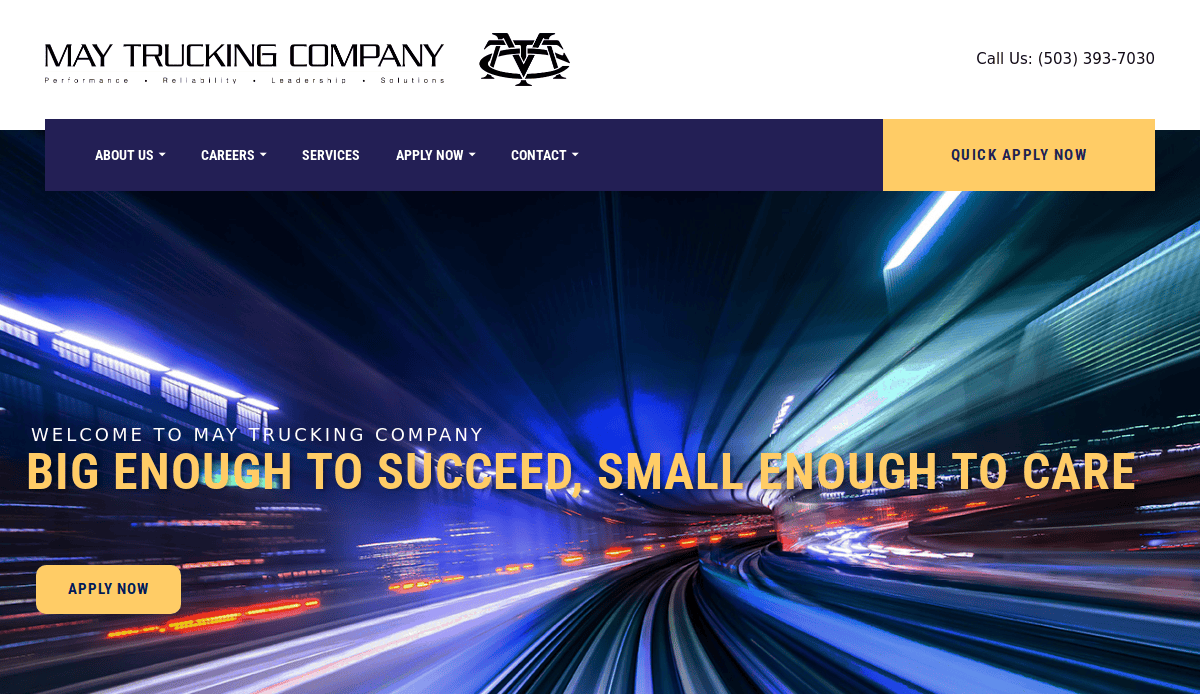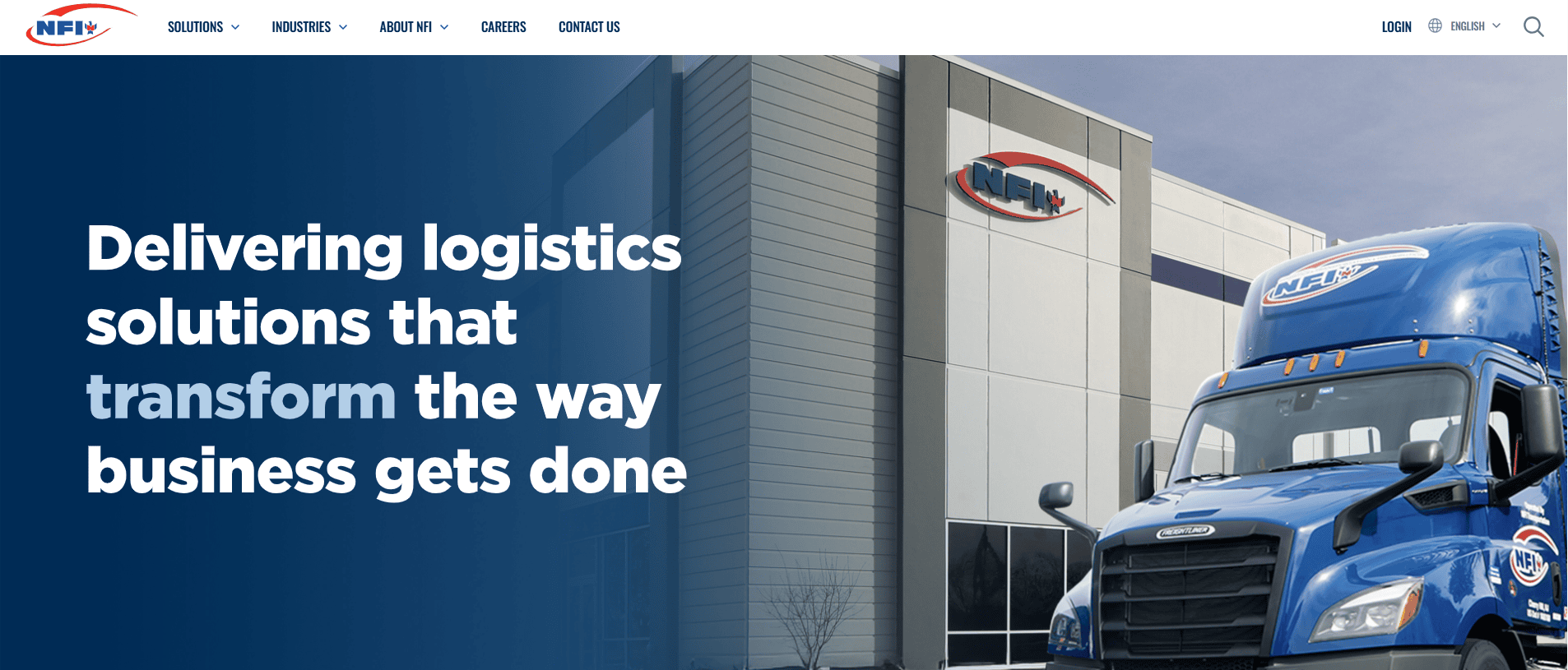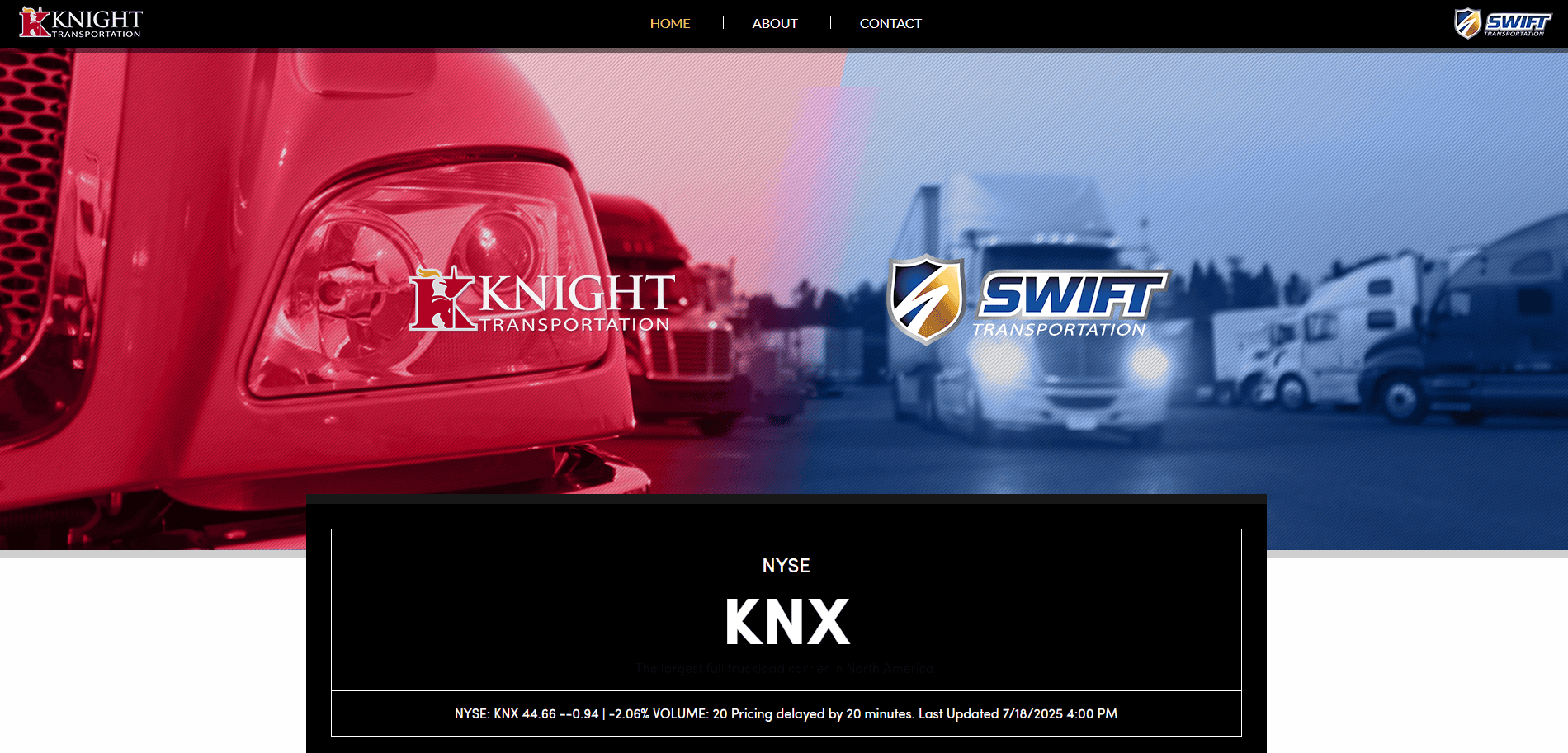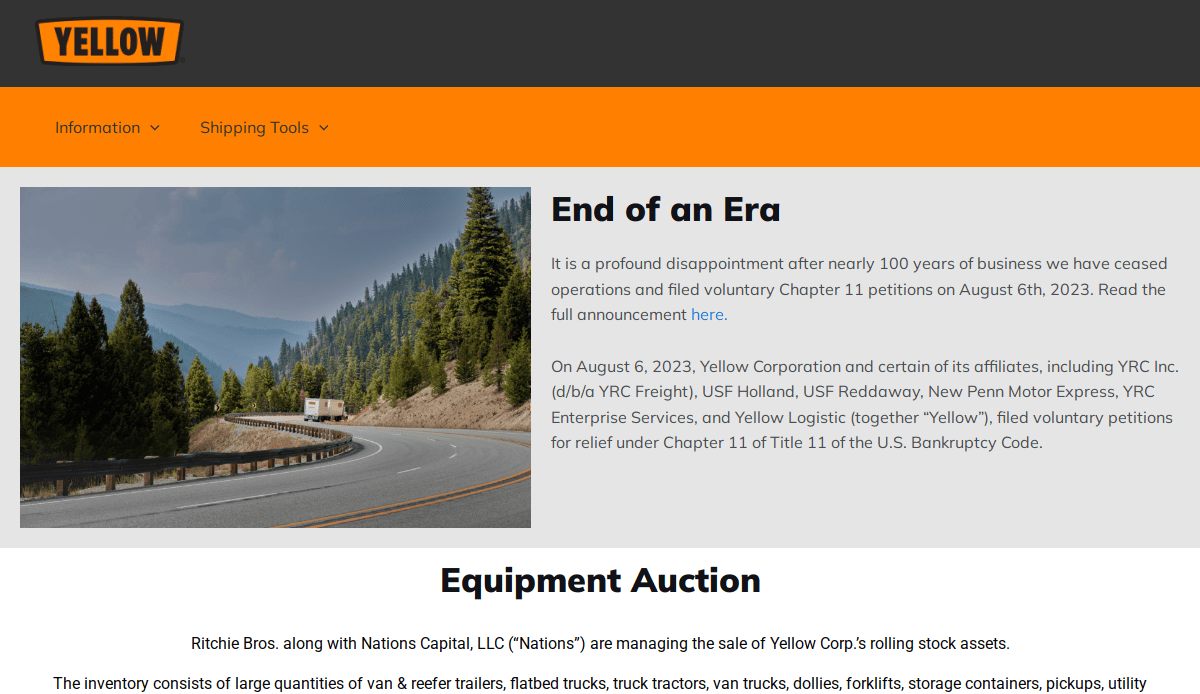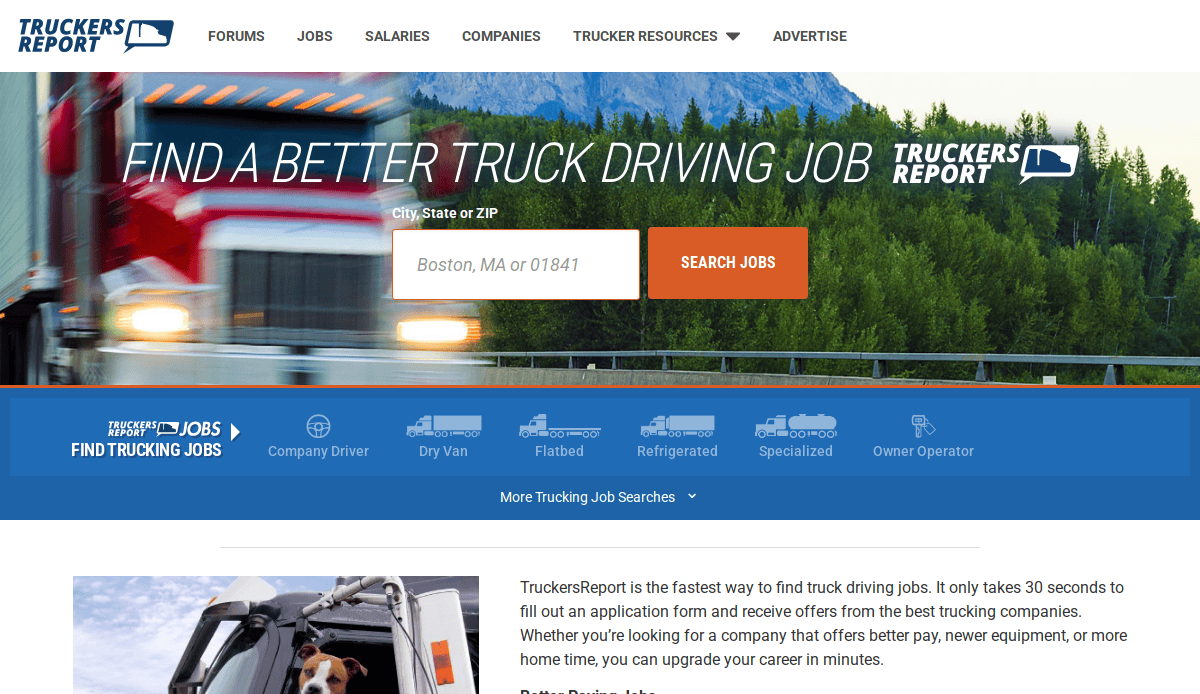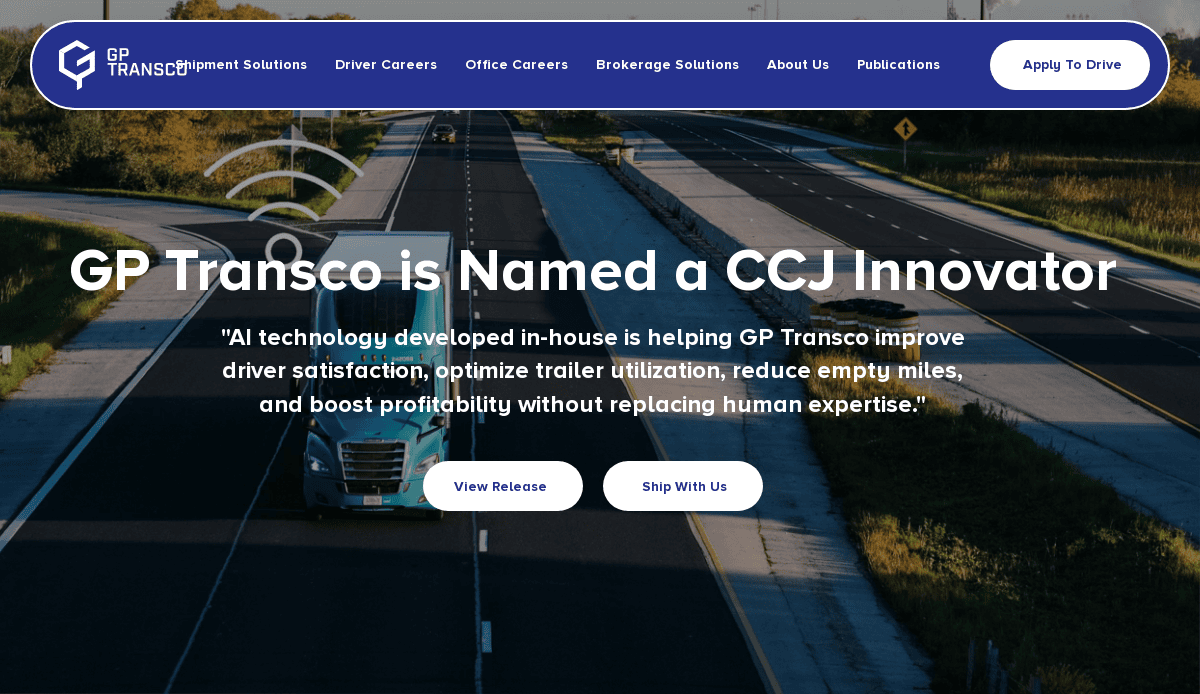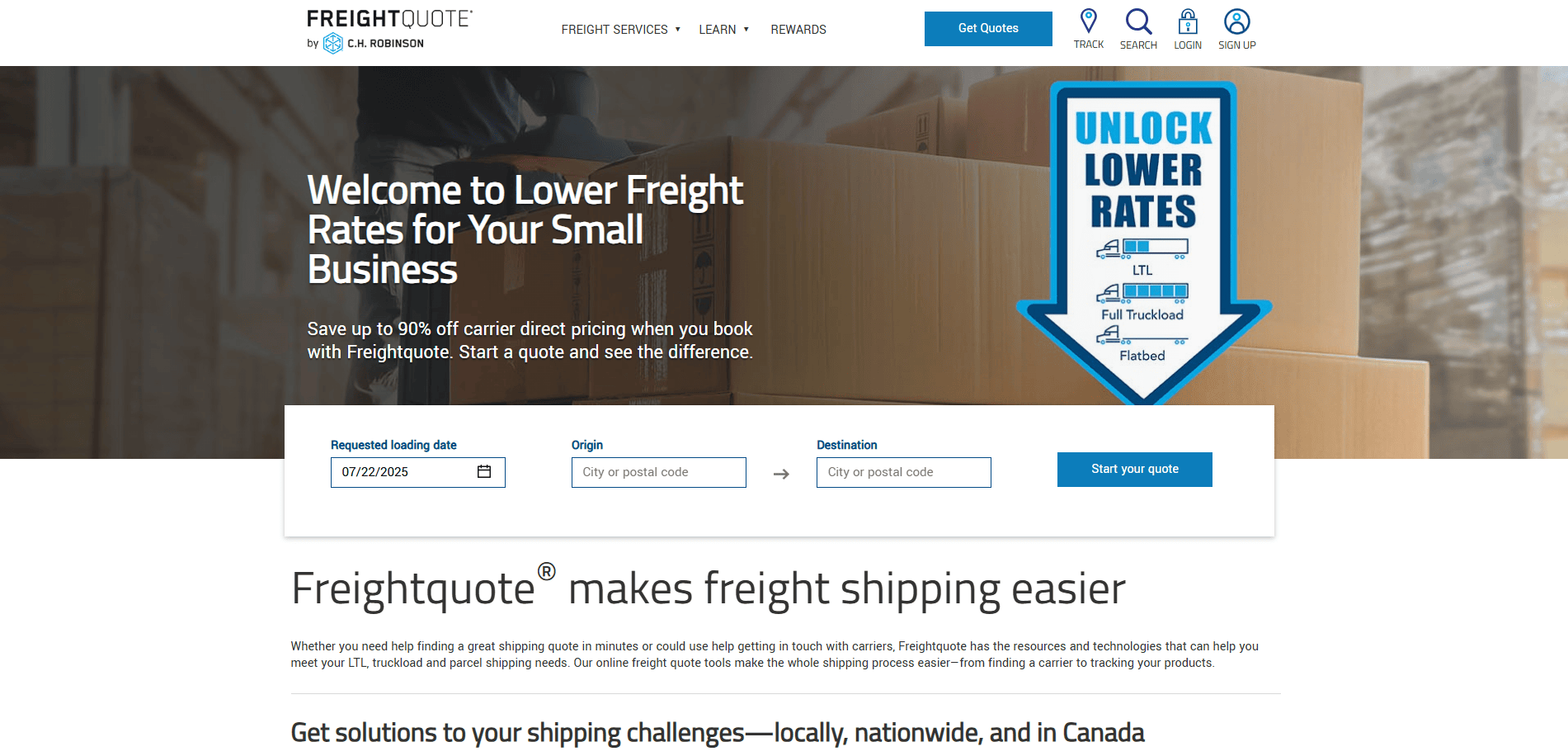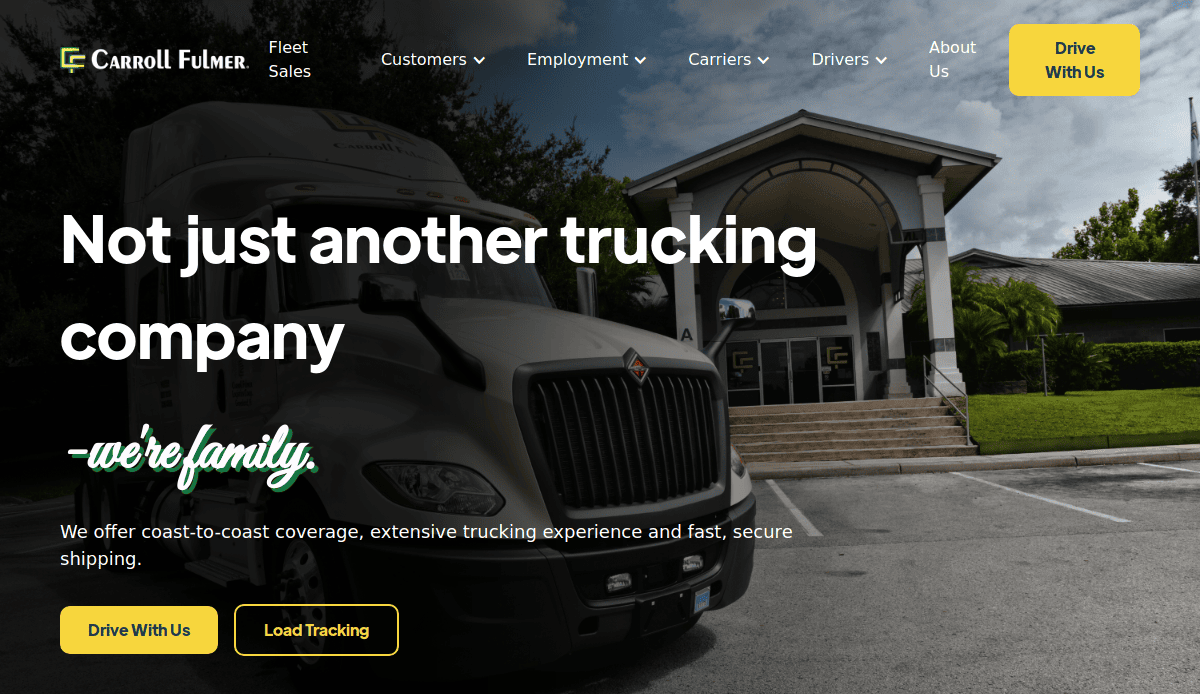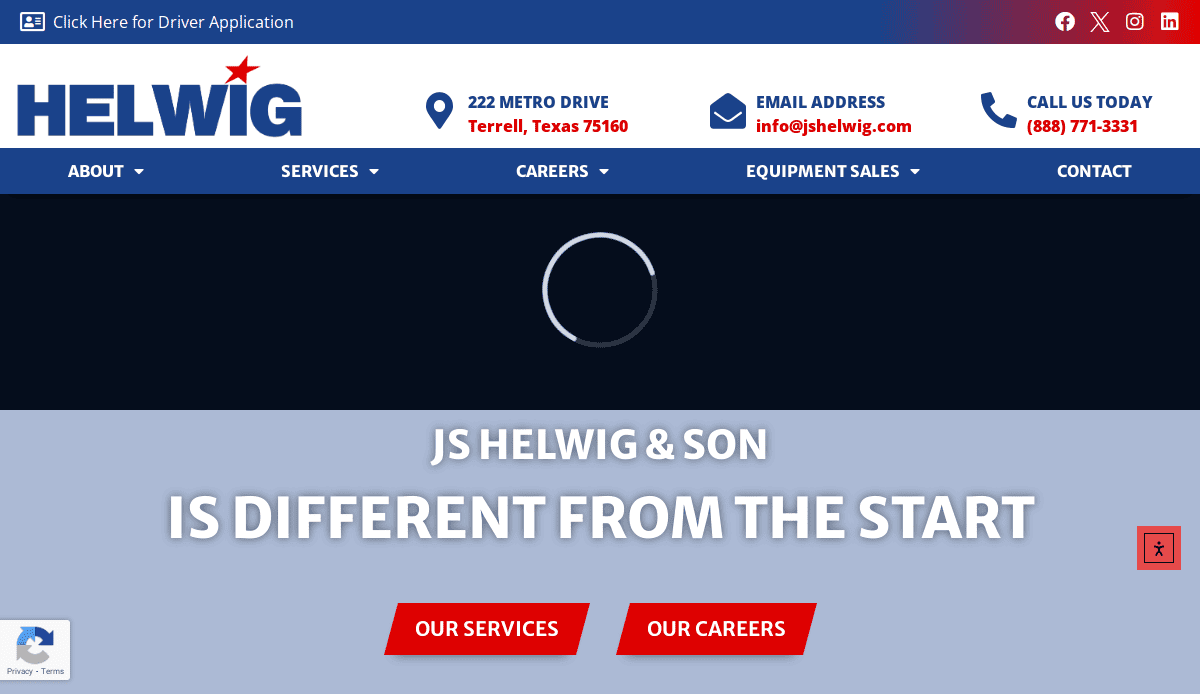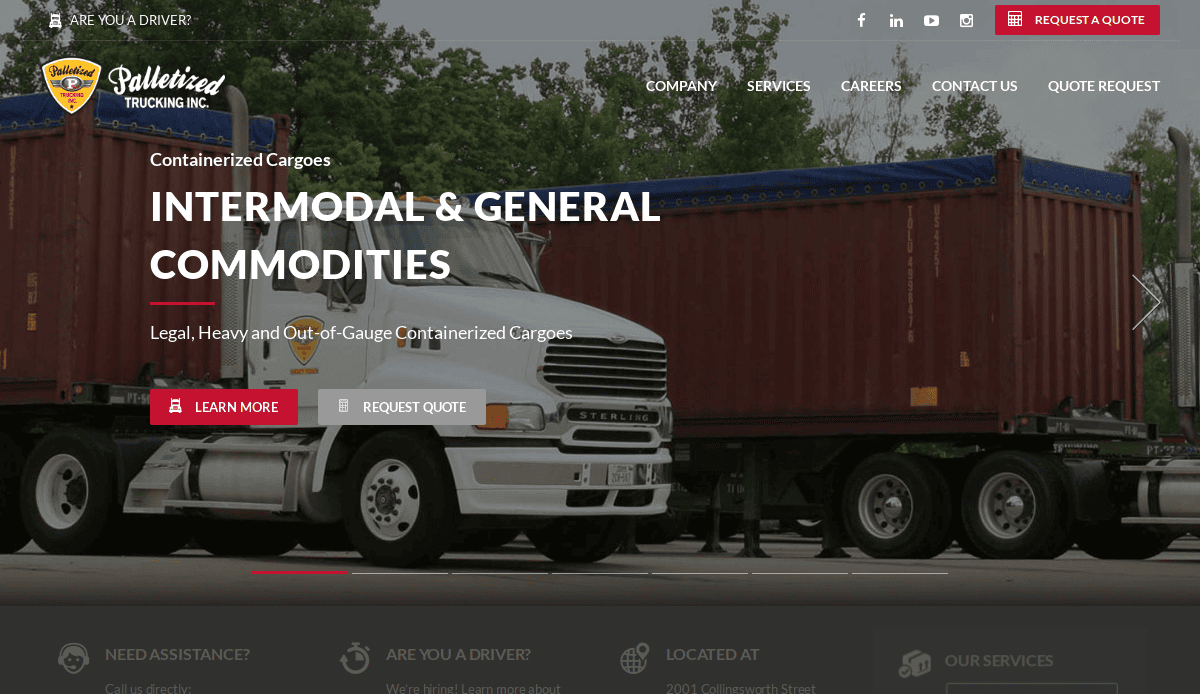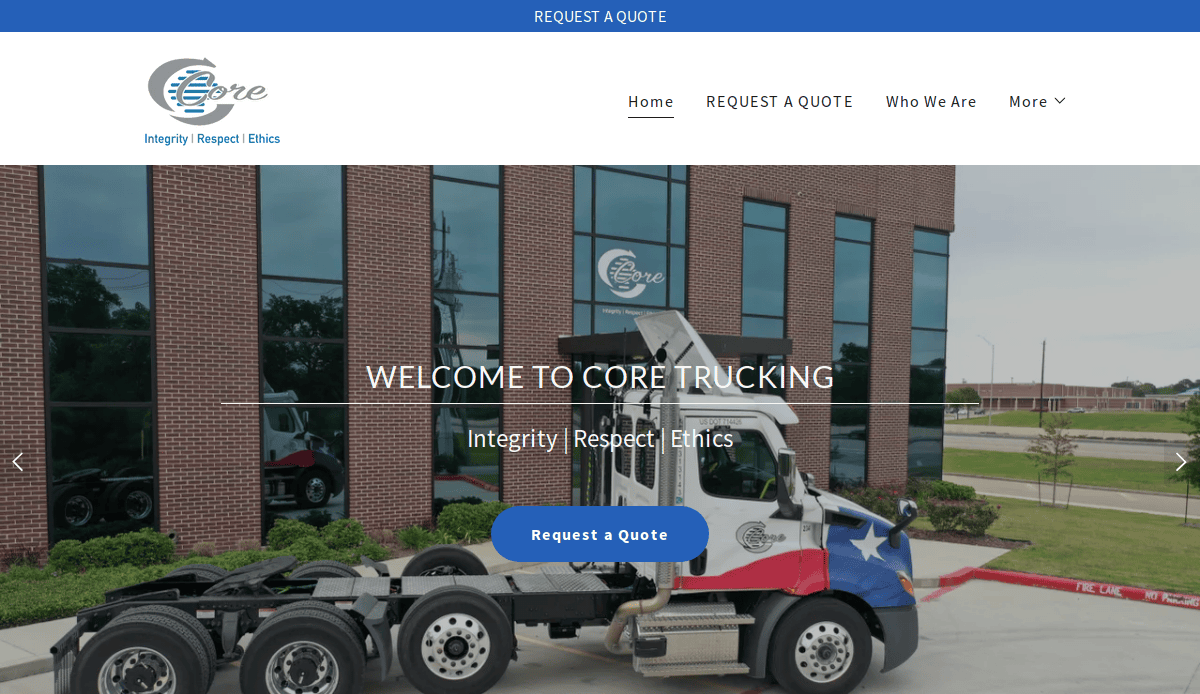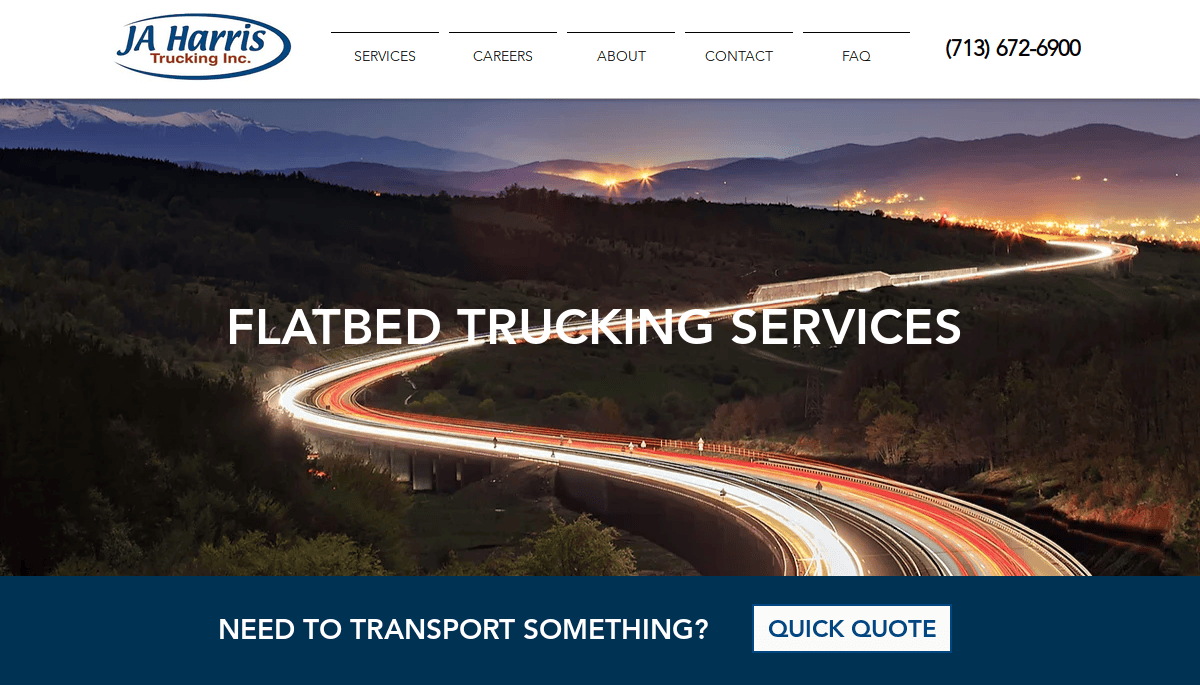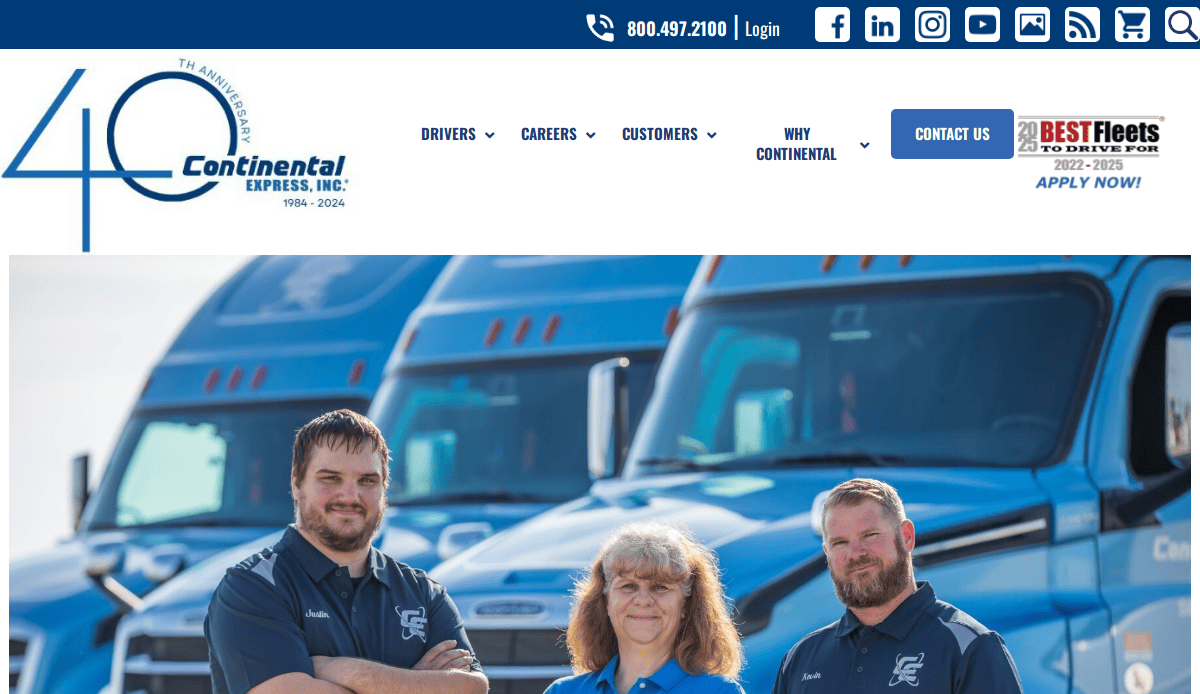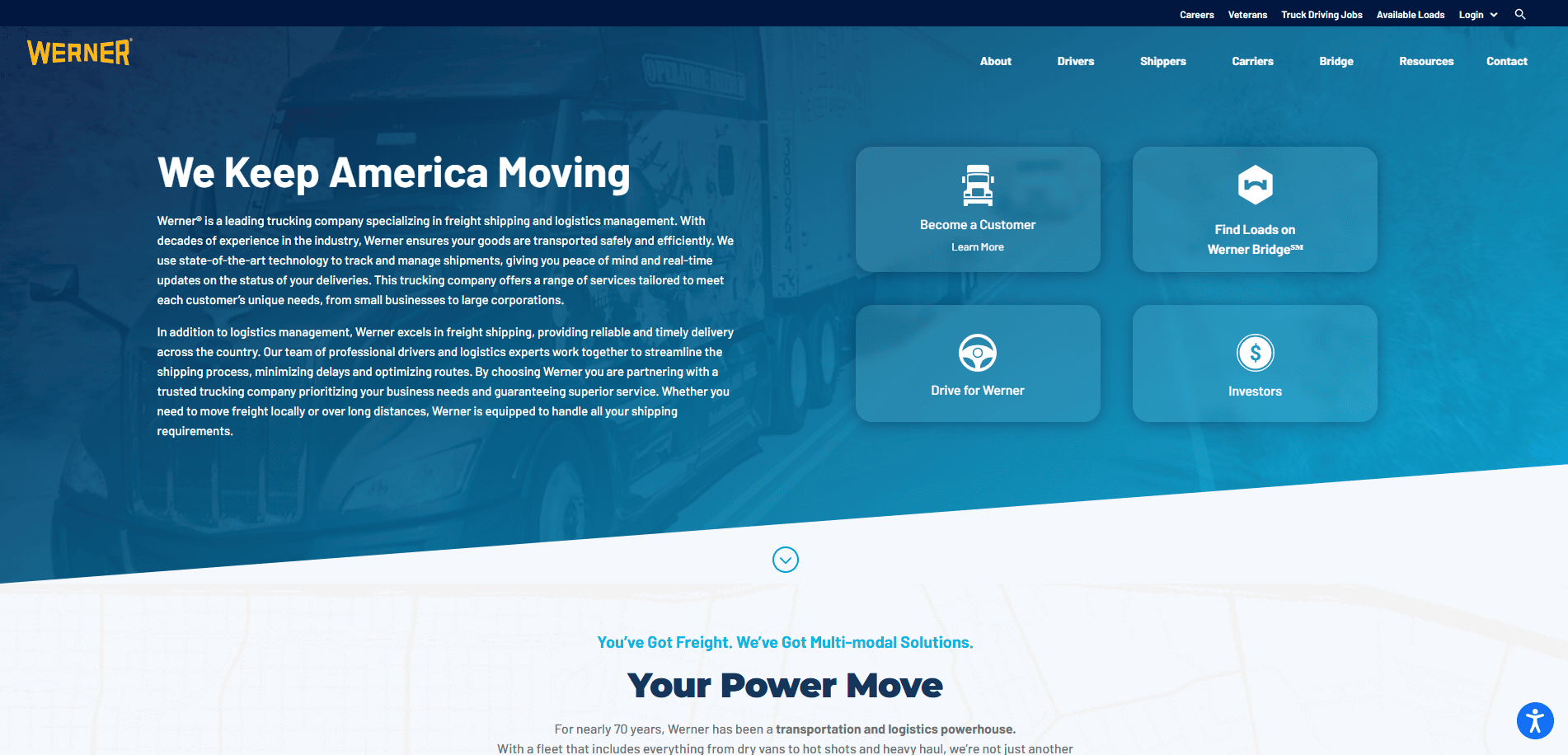Just looking for our Best Trucking Website examples list?
Why Your Trucking Website Design Matters More Than Ever
Nowadays, your website isn’t just a marketing tool—it’s your company’s front door. For trucking businesses, a well-designed website can be the difference between being overlooked and being the go-to logistics partner. Whether you’re looking to attract more shippers, hire experienced drivers, or build credibility with freight brokers, your online presence speaks volumes.
Trucking companies that invest in strategic website design see tangible benefits: more leads, stronger brand recognition, and higher trust with potential clients and partners. A high-performing website doesn’t just look good—it loads fast, ranks well, and guides users smoothly through booking and contact processes. This blog will guide you through everything you need to create or upgrade your trucking website to maximize impact and drive real business results.
Start with Strategy: Planning a Trucking Website That Delivers
Before diving into design details, every successful website starts with a clear plan. The planning phase is critical—it ensures your site aligns with your business goals, engages your target audience, and supports every visitor’s journey from awareness to action.
For trucking businesses, this means identifying the core purpose of the website: Are you trying to attract freight clients? Recruit drivers? Provide service and route details? Your answers shape the site’s structure, messaging, and functionality.
Key planning steps include:
- Define Your Target Audience: Shippers, brokers, drivers, or corporate partners—each audience has different needs.
- Set Clear Goals: Whether it’s generating quote requests, increasing job applications, or showcasing fleet capabilities, every page should support a specific business outcome.
- Map the User Journey: Anticipate how visitors will navigate the site and ensure they find key information, like contact forms, service areas, or equipment specs, without friction.
- Highlight Your Value Proposition: Showcase what sets your company apart—reliable delivery, modern fleet, safety record, or nationwide service.
Without a strategic planning process, companies risk launching a generic site that fails to convert. Taking the time to understand user needs and aligning content with business goals is the foundation for effective website design in any industry.
Design That Drives: Essential Website Principles for Trucking Businesses
A well-designed website doesn’t just look appealing—it functions as a powerful business tool that enhances your credibility and supports conversion goals. The design principles that guide high-performing sites ensure that form follows function, with every element purpose-built to engage visitors and drive action.
Here are the key design principles companies in trucking should prioritize:
- Clarity and Simplicity: Keep the layout clean and uncluttered. Use whitespace effectively and make sure key information like contact details, services, and driver applications is easy to find.
- Consistent Branding: Use consistent colors, fonts, and imagery that reflect your brand identity. A cohesive design reinforces professionalism and trust.
- Responsive Design: Your audience is mobile—your site must be too. A responsive layout ensures optimal viewing and navigation across all devices.
- Visual Hierarchy: Guide users’ eyes with clear headings, bullet points, and visual contrast to emphasize what matters most—CTAs, services, and trust signals like client logos or safety certifications.
- Accessibility: Make sure your site is easy to use for all users, including those with disabilities. This includes readable fonts, high-contrast colors, and alt text for images.
- Fast Load Speeds: Trucking clients and drivers won’t wait. Optimize images and minimize code bloat to ensure your site loads quickly on any connection.
- Trust-Building Elements: Incorporate testimonials, certifications, industry partnerships, and safety stats. These elements validate your reputation and reliability.
Design in the trucking industry must balance rugged professionalism with usability. When executed well, these principles ensure your website performs as both a digital storefront and a strategic marketing asset.
Structure That Works: Smart Content and Navigation for Trucking Sites
Effective content and intuitive navigation work hand-in-hand to create a user experience that informs, builds trust, and drives action. In the trucking industry, this means helping users quickly find the specific information they need—whether it’s fleet specs, service areas, job opportunities, or request forms.
Here’s how to structure your website’s content and navigation for maximum impact:
- Homepage: Your homepage should offer a high-level overview of your services, company values, and key differentiators. Use bold headlines, engaging images, and clear CTAs like “Request a Quote” or “Join Our Team.”
- Navigation Menu: Keep the top-level menu simple and logical. Standard pages include Home, About, Services, Careers, Contact, and possibly Blog or Testimonials. Use dropdowns if necessary, but avoid clutter.
- Services Pages: Create individual pages for each service (e.g., freight hauling, logistics, intermodal transport). Each page should include benefits, geographic coverage, equipment used, and a call to action.
- Careers Section: A Dedicated space for driver recruitment should include job listings, application forms, benefits, and endorsements from current drivers. Make it easy for potential hires to apply or reach out.
- About Page: Tell your story with emphasis on your experience, safety record, team, and mission. Incorporate real images of your team, trucks, and facilities to humanize your brand.
- Contact Page: Include multiple ways to get in touch—phone, email, and an easy-to-use contact form. Add an interactive map if applicable.
- SEO and Content Strategy: Integrate keyword-rich headers (like “trucking website design” and “freight transportation”) and concise, benefit-focused copy. Blog content should address common industry questions, share insights, and support search engine optimization visibility.
Your goal is to make navigation so intuitive that users don’t have to think about where to click next. When content is structured clearly and navigation is seamless, your website becomes a powerful marketing and recruitment tool that supports every area of your business.
Visual Power: How Images and Design Shape Your Trucking Brand Online
Visual elements on a trucking website do more than add aesthetic appeal—they reinforce your identity, guide user behavior, and help convey key information at a glance. For an industry that relies heavily on trust, efficiency, and professionalism, strong visuals are essential to a high-performing site.
Key visual strategies include:
- High-Quality Photography: Use professional, high-resolution images of your fleet, drivers, and operations. Avoid stock photos whenever possible—authentic visuals build credibility and make your company more relatable.
- Consistent Color Scheme: Align your color palette with your image. Use colors strategically to guide user actions—e.g., using a distinct button color for calls to action like “Get a Quote” or “Apply Now.”
- Typography: Choose fonts that are clean, easy to read, and consistent across the site. Use bold headlines to establish hierarchy and support scanning behavior.
- Iconography and Graphics: Simple icons can make complex information, like shipping options or equipment specs, easier to digest. Use custom illustrations or diagrams for enhanced engagement.
- Video Integration: Consider embedding short videos to showcase your fleet in action, explain services, or share feedback from clients and drivers. Videos increase time on site and build trust.
- Whitespace and Layout: Don’t overcrowd your pages. Allow elements to breathe and ensure visual balance. A well-organized layout makes your site look more modern and easier to navigate.
By carefully selecting and designing your visual elements, you help users connect emotionally with your brand while streamlining their journey through your site. This combination is key to increasing engagement and conversions in the trucking industry. Below are some leading industry examples to inspire you.
Best Trucking Website Examples
1. May Trucking Company
Location: Salem, OR
Key Takeaways:
- Clean, professional layout with intuitive navigation
- Prominent display of company history and services
- Dedicated driver recruitment section with a clear application process
2. MCO Transport Inc.
Location: Wilmington, NC
Key Takeaways:
- Minimalist design focusing on user engagement
- Straightforward navigation for easy information access
- Integration of social media feeds and interactive elements
3. Vitesse Transport
Location: Chicago, IL
Key Takeaways:
- Sleek design with dynamic animated elements
- Interactive maps and real-time tracking features
- Informative blog and news sections for industry insights
4. Knight-Swift Transportation
Location: Phoenix, AZ
Key Takeaways:
- Modern design with high-quality visuals
- Comprehensive information on services and operations
- Emphasis on safety and sustainability initiatives
5. YRC Worldwide
Location: Overland Park, KS
Key Takeaways:
- Vivid, modern design blending functionality with visual appeal
- Straightforward layout with a professional color scheme
- Clear presentation of logistics and transportation solutions
6. Truckers Report
Location: Chattanooga, TN
Key Takeaways:
- Clean, professional design with easy navigation
- Sections for industry news, forums, and job listings
- High-quality images and a consistent color scheme
7. GP Transco
Location: Joliet, IL
Key Takeaways:
- User-friendly interface with transparent information
- Emphasis on driver satisfaction and company culture
- Clear calls-to-action for recruitment and services
8. Freightquote
Location: Kansas City, MO
Key Takeaways:
- Patented technology platform for freight rate comparisons
- Simple, efficient booking process for customers
- Integration with e-commerce platforms for seamless service
9. Cargomatic
Location: Long Beach, CA
Key Takeaways:
- Real-time connection between shippers and carriers
- Mobile-friendly design for on-the-go access
- Focus on short-haul and drayage trucking markets
10. Bison Transport
Location: Winnipeg, MB (serving U.S. markets)
Key Takeaways:
- Extensive information on fleet and services
- Emphasis on safety and driver support
- Modern design with easy navigation
11. Optimal Dynamics
Location: New York, NY
Key Takeaways:
- Clean, professional design emphasizing AI solutions
- Simple color palette portrays professionalism
- Clear display of services and information
12. Carroll Fulmer Logistics
Location: Groveland, FL
Key Takeaways:
- Striking homepage with a picture background
- Prominent call-to-action buttons for driver recruitment and load tracking
- Modern design embodies efficient trucking services
13. Best Yet Express Trucking
Location: Gardena, CA
Key Takeaways:
- Minimalist design focusing on core services
- User-friendly navigation for quick access
- Consistent identity representation across the site
14. JS Helwig & Son LLC
Location: Terrell, TX
Key Takeaways:
- Emphasis on driver satisfaction and company culture
- Informative content about services and benefits
- Clean design with easy navigation
15. Palletized Trucking Inc.
Location: Houston, TX
Key Takeaways:
- Detailed information on specialized services
- Professional design with industry-specific visuals
- Clear calls-to-action for client engagement
16. Coreo FTX
Location: Dallas, TX
Key Takeaways:
- Innovative design reflecting the company’s tech-forward approach
- Clear presentation of services and solutions
- Engaging content highlighting company strengths
17. JA Harris Trucking
Location: Atlanta, GA
Key Takeaways:
- Professional design with emphasis on reliability
- Detailed service descriptions for client clarity
- Strong branding elements throughout the site
18. Continental Express Inc.
Location: Sidney, OH
Key Takeaways:
- Clean, modern design with intuitive navigation
- Focus on driver recruitment and client services
- Consistent and professional visuals
19. Werner Enterprises
Location: Omaha, NE
Key Takeaways:
- Clean, professional design emphasizing trust and reliability
- Comprehensive information on services and career opportunities
- User-friendly navigation with clear calls-to-action
20. R+L Carriers
Location: Wilmington, OH
Key Takeaways:
- Modern layout with intuitive navigation
- Detailed service descriptions and tracking tools
- Strong business persona with consistent visual elements
These websites exemplify how effective design can enhance user experience, convey professionalism, and support business objectives in the industry of trucking. Whether it’s through clean layouts, strong calls-to-action, or engaging visuals, each site offers valuable insights into successful web design strategies.
Drive Results with a High-Impact Trucking Website
Ready to build a great website for your trucking business? Whether you’re starting with a new domain name or redesigning an outdated site, your website should be a reliable marketing tool that showcases your company’s services, attracts new clients, and engages potential customers.
From integrating your company’s logo and brand visuals to presenting client feedback, case studies, and company updates, every detail matters. We specialize in designing websites for the trucking and transportation industry that are easy for customers to use, fully customizable, and built for optimization. Our builder process focuses on the types of trucking you offer, the company news you need to share, and the optimization that drives results.
Don’t settle for a template when you can have the best trucking website designed by professional designers. Let us help you attract and retain new customers, recruit qualified drivers, and enhance your online presence with engaging design and affordable pricing.
Get in touch with us today to start the design process and make a trucking website that delivers an optimal viewing experience across all devices.
Common Answers to Your Trucking Website Inquiries
What makes a website truly effective?
A great website includes clear calls to action, an intuitive navigation system, and a responsive design. The best websites also reflect a professional appearance with up-to-date visuals, strong optimization, and clear descriptions of your transportation services.
How do I attract potential drivers to my website?
To attract potential drivers, include a careers section that’s easy to find, mobile-friendly, and full of helpful content like job benefits, endorsements, and application forms. Adding case studies and company updates can also boost engagement.
What are examples of effective sites I can learn from?
You can find examples in our Best Trucking Websites blog that showcase intuitive navigation, professional design, and engaging visuals.
Why is intuitive navigation important for my site?
When navigation is intuitive, visitors can quickly find the information they need—whether it’s dispatcher contact info, service areas, or career opportunities—leading to better engagement and more conversions.
Should I include client testimonials and company news?
Yes! These elements build trust, demonstrate reliability, and serve as important marketing tools. Keep them up-to-date and place them strategically, like near your footer or on key service pages.
How do visual elements like a footer or logo impact user experience?
Consistent representation—including your company’s logo and a well-designed footer—helps create a cohesive experience and reinforces your identity. These elements also guide users and enhance navigation.
Is it better to use a template or a custom website builder?
While a template may be faster, a custom-built site by professional designers offers greater flexibility, image alignment, and performance. For trucking and transportation industry websites, customization ensures your logistics solutions and services are front and center.
What should I include on my homepage?
Your homepage should highlight your trucking company’s services, emphasize your reliability, and invite action through strong CTAs. Visuals of truck drivers, service areas, and interactive elements make it engaging.
How does a reliable website help attract new customers?
A reliable website builds credibility, loads quickly, and delivers an optimal viewing experience. This increases trust and makes it easier to attract new clients and retain existing ones.
What are some essential design tips for my trucking site?
Keep your layout clean, content concise, and CTAs visible. Use high-quality visuals, integrate client feedback, and update regularly to reflect current services and achievements.
Need help creating a reliable website tailored to your trucking business? Contact us to get started.

